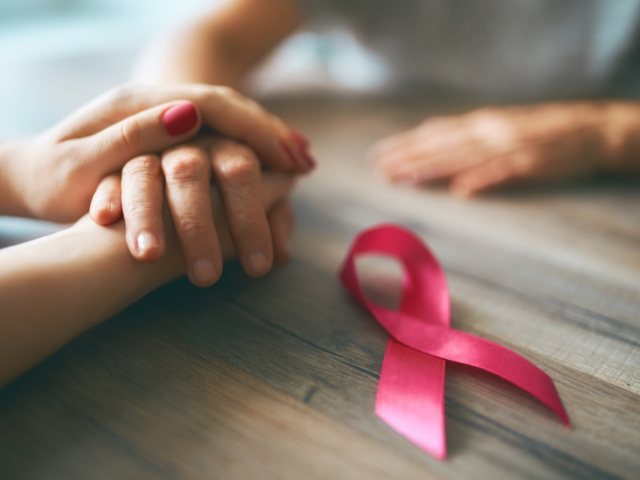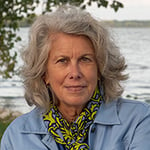Published: October 6, 2021

The second most common type of cancer in the United States is breast cancer (skin cancer is first). Each year in the United States, about 255,000 cases of breast cancer are diagnosed in women and about 2,300 in men. About 42,000 women and 500 men in the U.S. die each year from breast cancer. Breast cancer remains the second leading cause of cancer death among women overall.
Many of us want to ignore those numbers. “They apply to other people, certainly not me,” we tell ourselves. But October is Breast Cancer Awareness Month and as the saying goes “knowledge is power” so power-up your awareness by learning the symptoms, risk factors and early detection practices regarding breast cancer.
Symptoms and Risk Factors
Symptoms vary and some people have no symptoms, but according to the Centers for Disease Control and Prevention (CDC) common warning signs include:
- New lump in the breast or underarm (armpit);
- Thickening or swelling of part of the breast;
- Irritation or dimpling of breast skin;
- Redness or flaky skin in the nipple area or the breast;
- Pulling in of the nipple or pain in the nipple area;
- Nipple discharge other than breast milk, including blood;
- Any change in the size or the shape of the breast;
- Pain in any area of the breast.
These symptoms can appear with other conditions that are not cancer, but it’s important to see as soon as possible to get an accurate diagnosis.
A combination of factors increase your risk. “The main factors that influence your risk include being a woman and getting older. Most breast cancers are found in women who are 50 years old or older,” according to the CDC.
Other risk factors you cannot change include: genetic mutations; dense breasts; family history of breast or ovarian cancer; and women who took DES to prevent miscarriages and their female offspring.
But good news – there are risk factors you can change.
- Become more physically active
- Watch your weight so you do not become overweight or obese
- Eat a low-fat diet that includes lots of fruits and green and orange veggies
- Breastfeed your children, if possible
- Limit alcoholic drinks
Research also suggests that factors such as smoking, being exposed to chemicals that can cause cancer, and changes in other hormones due to night shift working also may increase breast cancer risk.
Early Detection is Key
“Breast cancer that’s found early, when it’s small and has not spread, is easier to treat successfully,” according to the American Cancer Society.
While mammograms are not perfect and may miss some cancers, this low-dose X-ray is the best tool to detect breast cancer at an early stage.
Current American Cancer Society guidelines for women at average risk for breast cancer (no personal or family history of breast cancer, no genetic mutation known to increase risk of breast cancer, no chest radiation therapy before the age of 30) are:
Women between 40 and 44 have the option to start screening with a mammogram every year.
Women 45 to 54 should get mammograms every year.
Women 55 and older can switch to a mammogram every other year, or they can choose to continue yearly mammograms. Screening should continue as long as a woman is in good health and is expected to live at least 10 more years.
Research has not shown a clear benefit of regular physical breast exams done by either a health professional or by women themselves. That said, women should be familiar with how their breasts normally look and feel and should report any changes to a health care provider right away.
Along with personally following these guidelines, encourage mothers, daughters and other female relatives and friends to do the same. And don’t let cost stop you from getting a mammogram. The National Mammogram Program provides free mammograms and diagnostic services at facilities throughout the country, including the Cleveland Clinic.
Free Guide: 10 Best Practices for Staying Healthy After 60
In our free guide, we share many actions you can take to live a long, healthy and happy life in body, mind and spirit!
 In the past, Molly Kavanaugh frequently wrote about Kendal at Oberlin for the Cleveland Plain Dealer, where she was a reporter for 16 years. Now we are happy to have her writing for the Kendal at Oberlin Community.
In the past, Molly Kavanaugh frequently wrote about Kendal at Oberlin for the Cleveland Plain Dealer, where she was a reporter for 16 years. Now we are happy to have her writing for the Kendal at Oberlin Community.
About Kendal at Oberlin: Kendal is a nonprofit life plan community serving older adults in northeast Ohio. Located about one mile from Oberlin College and Conservatory, and about a 40 minute drive from downtown Cleveland, Kendal offers a vibrant resident-led lifestyle with access to music, art and lifelong learning.




